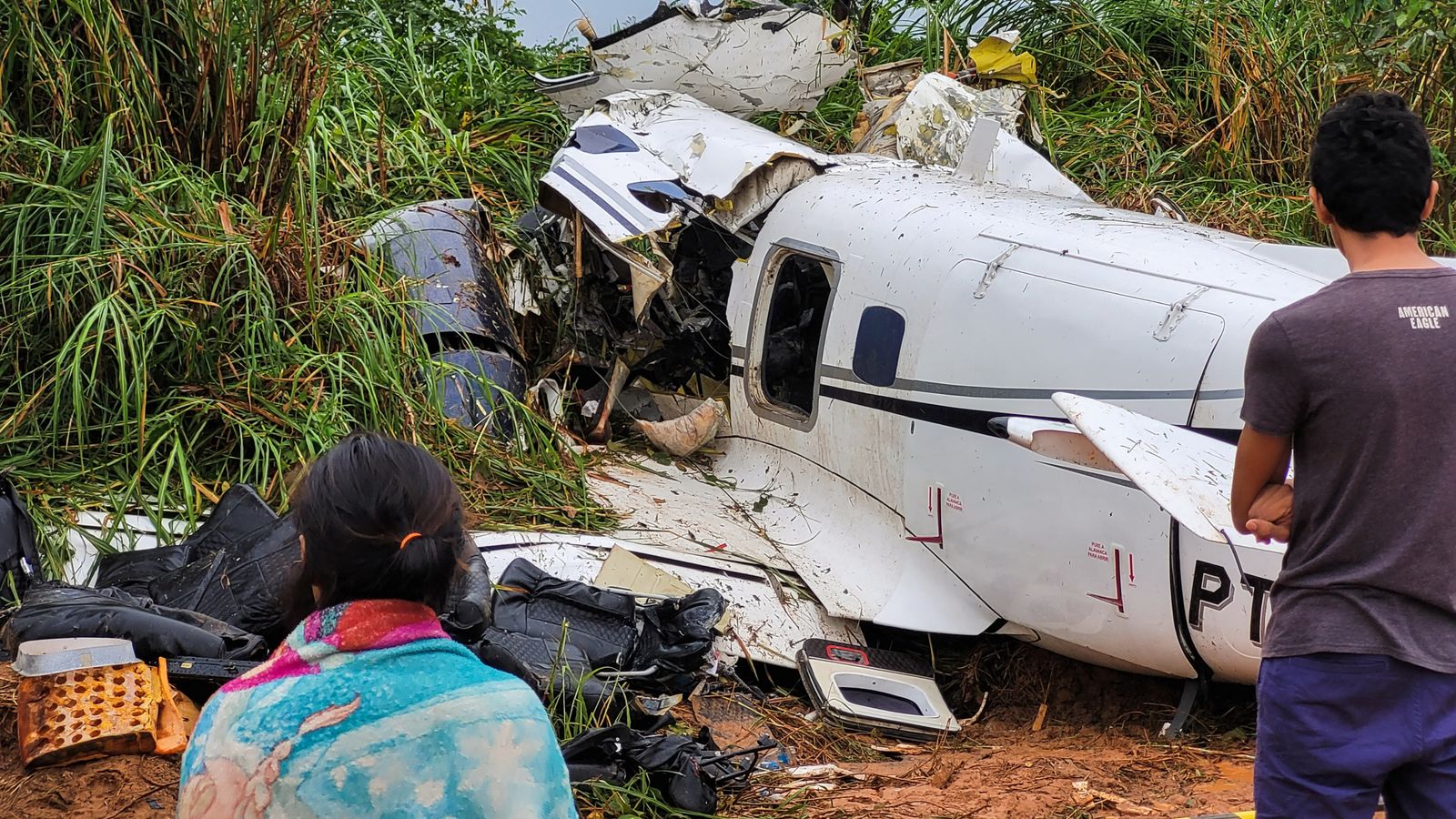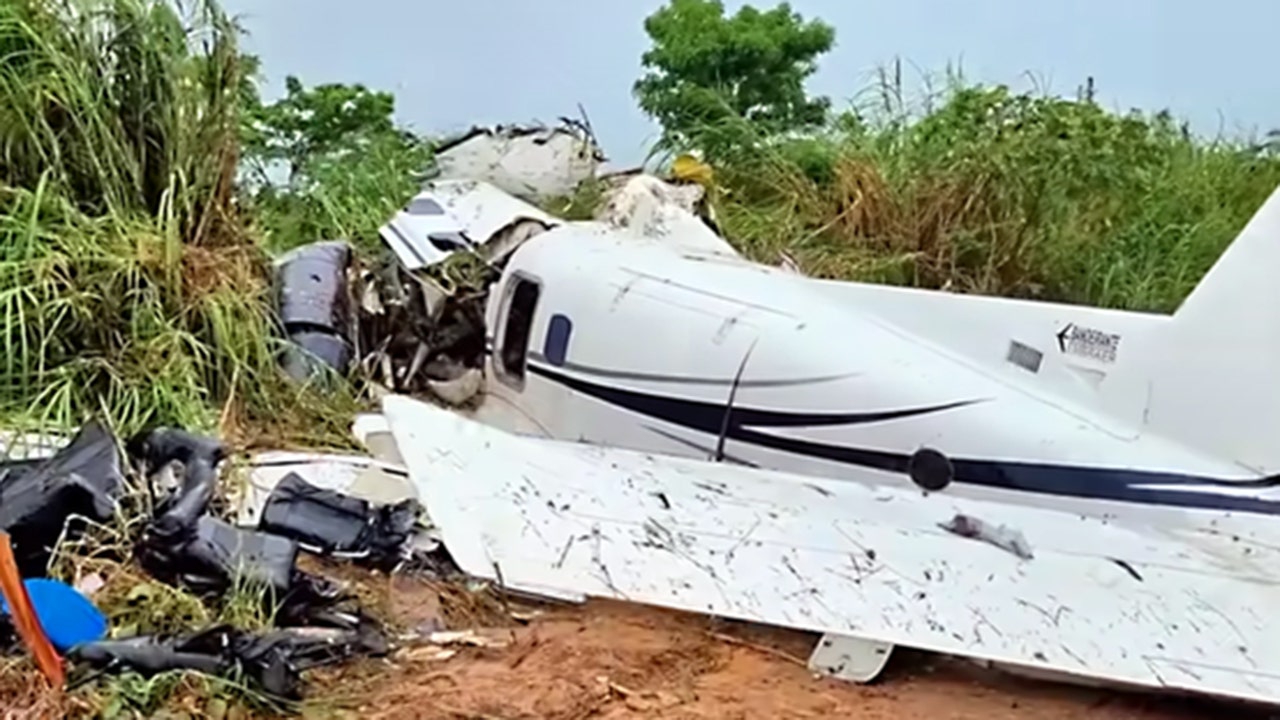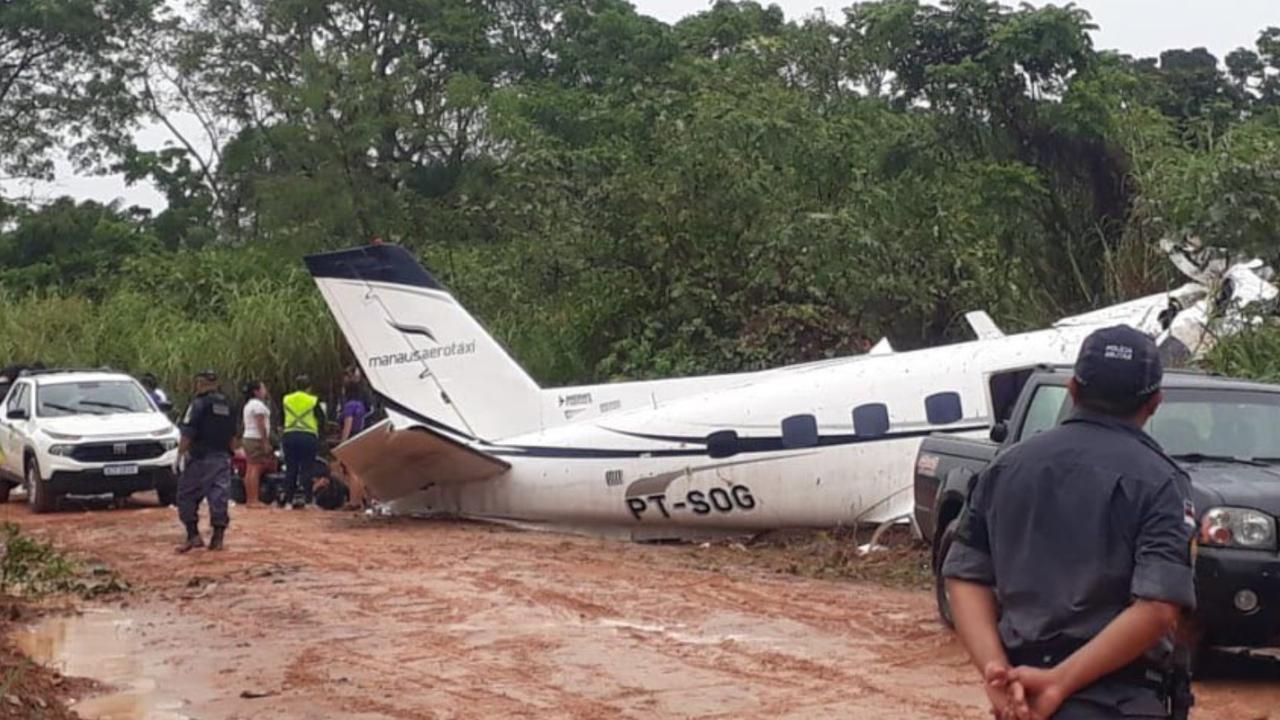Historical Overview of Plane Crashes in Brazil

Brazil, a nation with a vast and diverse geography, has a long and unfortunately, sometimes tragic, history with aviation. From the early days of flight to the modern era, plane crashes have left an indelible mark on the country, raising concerns about safety, infrastructure, and the human cost of air travel. This historical overview examines significant plane crashes in Brazil, exploring their causes, impact, and the evolution of safety regulations and practices.
Notable Plane Crashes in Brazil
The history of aviation in Brazil is punctuated by several notable plane crashes, each leaving a lasting impact on the country’s aviation industry and society. These accidents have not only highlighted the dangers of air travel but also spurred investigations and reforms aimed at improving safety standards.
- The 1973 Varig Flight 837 Crash: On January 3, 1973, Varig Flight 837, a Boeing 707, crashed near the French capital, Paris, killing 117 people. The crash, attributed to pilot error, sparked widespread public concern about aviation safety in Brazil. It also prompted the Brazilian government to strengthen its aviation regulations and oversight.
- The 1982 Gol Transportes Aéreos Flight 1907 Crash: On September 29, 1982, Gol Transportes Aéreos Flight 1907, a Boeing 737, crashed in a densely populated area of São Paulo, killing 16 people. The crash, attributed to pilot error and poor weather conditions, led to the implementation of new training programs for pilots and stricter weather monitoring protocols.
- The 2006 TAM Airlines Flight 3054 Crash: On July 17, 2006, TAM Airlines Flight 3054, an Airbus A320, overran the runway at São Paulo’s Congonhas Airport, crashing into a fuel depot and killing 199 people. The crash, attributed to a combination of factors, including pilot error, poor weather conditions, and runway design, prompted widespread reforms in Brazil’s aviation industry.
Trends in Plane Crashes Over Time
The number and severity of plane crashes in Brazil have fluctuated over time, reflecting the evolution of aviation technology, safety regulations, and infrastructure.
- Early Years: In the early days of aviation in Brazil, plane crashes were more frequent due to a lack of safety standards, limited technology, and inexperienced pilots.
- Post-World War II: The post-World War II era saw a significant increase in air travel in Brazil, leading to a surge in the number of plane crashes. This period also saw the development of more sophisticated aircraft and improved safety regulations.
- Modern Era: In recent decades, Brazil has experienced a significant decrease in the number and severity of plane crashes, attributed to advances in aviation technology, stricter safety regulations, and improved infrastructure. However, the country still faces challenges in ensuring the safety of its aviation industry.
Factors Contributing to Plane Crashes in Brazil
Several factors have contributed to plane crashes in Brazil over the years.
- Pilot Error: Pilot error has been a major contributing factor to many plane crashes in Brazil. This includes factors like fatigue, lack of training, and poor judgment.
- Weather Conditions: Brazil’s tropical climate and diverse geography can create challenging weather conditions, including thunderstorms, heavy rainfall, and strong winds, which can contribute to plane crashes.
- Infrastructure: The quality of Brazil’s aviation infrastructure, including airports, runways, and air traffic control systems, has played a role in some plane crashes.
- Maintenance Issues: Inadequate maintenance of aircraft has also contributed to some plane crashes in Brazil.
- Safety Regulations: In the past, Brazil’s aviation safety regulations were less stringent than in other countries, which contributed to a higher rate of plane crashes. However, in recent years, the country has made significant progress in strengthening its aviation safety regulations.
Societal Impact of Plane Crashes in Brazil
Plane crashes in Brazil have had a profound impact on the country’s society, causing grief, trauma, and public outcry.
- Loss of Life: Plane crashes have resulted in the loss of countless lives, leaving families and communities devastated.
- Economic Impact: Plane crashes can have a significant economic impact, affecting the tourism industry, transportation sector, and insurance companies.
- Public Confidence: Plane crashes can erode public confidence in the safety of air travel, leading to a decline in passenger numbers.
- Political Impact: Plane crashes can also have a political impact, leading to public scrutiny of the government’s aviation policies and regulations.
Lessons Learned and Future Outlook
Plane crashes in Brazil have served as a stark reminder of the importance of aviation safety. The country has learned valuable lessons from these tragedies, leading to improvements in safety regulations, pilot training, and infrastructure.
- Enhanced Safety Regulations: Brazil has implemented stricter safety regulations, including mandatory pilot training, aircraft maintenance standards, and air traffic control procedures.
- Technological Advancements: Advances in aviation technology, such as collision avoidance systems and weather monitoring equipment, have significantly improved safety in recent years.
- Improved Infrastructure: Brazil has invested in upgrading its aviation infrastructure, including airports, runways, and air traffic control systems.
“While plane crashes remain a tragic reality, the lessons learned from past accidents have helped to make air travel safer in Brazil. The country’s commitment to continuous improvement in aviation safety is crucial for ensuring the well-being of its citizens and the future of its aviation industry.”
Common Causes of Plane Crashes in Brazil
Brazil, with its vast geographical expanse and bustling air traffic, unfortunately, has witnessed a significant number of plane crashes over the years. While the country has made strides in aviation safety, understanding the root causes of these incidents is crucial for continued improvement and the prevention of future tragedies.
Pilot Error, Plane in brazil crash
Pilot error is a leading cause of plane crashes globally, and Brazil is no exception. Factors contributing to pilot error can range from inadequate training and experience to fatigue, distraction, and misjudgment in critical situations.
“In 2017, a TAM Airlines Boeing 737-800 crashed in São Paulo, killing all 199 passengers and crew members. The investigation revealed that the pilot had misidentified the runway during landing, leading to a fatal collision with a cargo plane.”
Mechanical Failure
Mechanical failures, including engine malfunctions, hydraulic system problems, and structural defects, can also contribute to plane crashes.
“In 2006, a Gol Airlines Boeing 737-800 collided with a Legacy 600 business jet over the Amazon rainforest. The investigation concluded that a faulty sensor in the Gol aircraft’s transponder system had led to a loss of communication and the collision.”
Weather Conditions
Brazil’s diverse geography and tropical climate expose its aviation industry to a range of weather challenges, including thunderstorms, heavy rain, wind shear, and fog.
“In 2007, a TAM Airlines Airbus A320 crashed during landing at Congonhas Airport in São Paulo, killing 199 people. The investigation attributed the crash to a combination of heavy rain and a strong crosswind, which caused the aircraft to skid off the runway.”
Terrorism
While relatively uncommon, acts of terrorism have also contributed to plane crashes in Brazil.
“In 1989, a Varig Airlines Boeing 737-200 was hijacked and forced to land in Rio de Janeiro. The hijackers detonated a bomb on board, killing three people and injuring several others.”
Safety Protocols and Regulations
Brazil has implemented comprehensive safety protocols and regulations to address the various causes of plane crashes. These include stringent pilot training and licensing requirements, regular aircraft maintenance inspections, and advanced weather monitoring systems. However, there are ongoing efforts to further enhance these protocols, including the implementation of new technologies and the strengthening of regulatory oversight.
Impact of Plane Crashes on Brazil: Plane In Brazil Crash

Plane crashes in Brazil have profound and multifaceted impacts, reverberating through the nation’s economy, society, and politics. These tragedies not only claim lives but also leave scars on the aviation industry, tourism sector, and public confidence.
Economic Consequences
Plane crashes in Brazil have significant economic consequences. The immediate impact includes the loss of human capital, as skilled professionals and valuable workers perish. This loss disrupts industries and businesses, hindering productivity and economic growth. Moreover, the cost of rescue operations, investigation, and compensation to victims’ families adds to the financial burden.
- In 2007, the TAM Airlines Flight 3054 crash in São Paulo, which claimed 199 lives, resulted in an estimated economic loss of over $1 billion. This included the cost of aircraft, insurance, compensation, and lost productivity.
- The crash also had a significant impact on the Brazilian stock market, with TAM Airlines shares plummeting by 20% in the days following the incident.
Social Impact
Plane crashes have a profound social impact, leaving behind a trail of grief, trauma, and social disruption. The loss of life, particularly when involving families and communities, creates a sense of collective mourning and disorientation. The psychological impact on survivors and families of victims can be long-lasting, leading to mental health issues such as post-traumatic stress disorder (PTSD) and anxiety.
- The 2016 crash of LaMia Flight 2933, which carried the Brazilian football team Chapecoense, devastated the nation. The tragedy brought together Brazilians from all walks of life in grief and solidarity, highlighting the unifying power of sport and the collective pain of loss.
- The crash also raised concerns about safety standards in the aviation industry and led to calls for stricter regulations and improved oversight.
Political Impact
Plane crashes in Brazil often spark political debates and scrutiny. The government is held accountable for ensuring the safety of air travel and is expected to respond effectively to tragedies. Public pressure for investigations, improved safety regulations, and accountability measures intensifies following major crashes. The government’s response, including the transparency of investigations and the implementation of safety improvements, can significantly impact public trust and confidence in the aviation industry.
- Following the TAM Airlines Flight 3054 crash, the Brazilian government launched a comprehensive review of aviation safety regulations and procedures. This led to the implementation of new safety standards and increased oversight of airlines.
- The crash also sparked public debate about the adequacy of airport infrastructure and the need for investment in safety improvements.
Impact on the Aviation Industry
Plane crashes have a significant impact on the aviation industry in Brazil. The incidents can damage the reputation of airlines, leading to a decline in passenger confidence and a decrease in bookings. This can result in financial losses and operational challenges for airlines.
- The 2007 TAM Airlines Flight 3054 crash had a major impact on the airline’s reputation and financial performance. The company faced significant legal claims, lost revenue, and experienced a decline in passenger confidence.
- The crash also raised concerns about the safety of Brazilian airlines and prompted the government to introduce stricter safety regulations.
Impact on Tourism
Plane crashes can negatively impact the tourism industry in Brazil. The incidents can create a perception of risk and insecurity, discouraging tourists from visiting the country. This can lead to a decline in tourist arrivals, impacting the hospitality sector, businesses, and local economies.
- The 2016 LaMia Flight 2933 crash, which involved a flight carrying a football team to a match in Colombia, raised concerns about air travel safety in the region and potentially discouraged some tourists from visiting Brazil.
- However, the impact on tourism was relatively limited, as the incident was widely viewed as an isolated tragedy.
Impact on Public Confidence
Plane crashes can erode public confidence in the aviation industry. Passengers may become apprehensive about flying, particularly if there is a perception that safety standards are inadequate or that investigations are not thorough. This can lead to a decline in air travel demand and impact the overall growth of the aviation sector.
- Following the TAM Airlines Flight 3054 crash, there was a noticeable decline in air travel demand in Brazil. Passengers expressed concerns about safety and some opted for alternative modes of transportation.
- However, public confidence in the aviation industry gradually recovered as the government implemented safety improvements and airlines took steps to enhance their safety protocols.
Plane in brazil crash – Another plane crash in Brazil, man, it’s a right shame. You know, it reminds me of that Voepass plane crash a few years back, proper tragedy. Makes you think about how fragile life is, innit? Anyway, hope they find out what happened in this latest one.
Heard about that plane crash in Brazil, man? Proper tragedy. It’s mad to think about how many people fly in those things every day, especially in a place like Brazil with all those lush jungles and vast landscapes.
You know, if you’re ever looking to take a flight over the Amazon, you can check out this website passenger plane brazil for some info on airlines and routes. Anyway, that crash, it’s a real reminder of how fragile life can be, innit?

